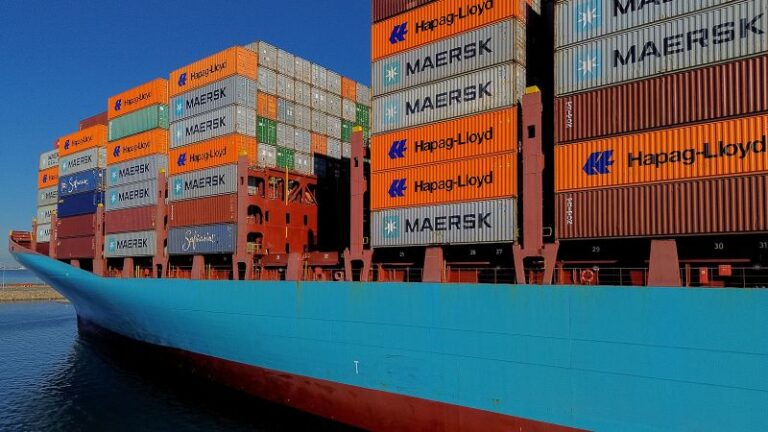New York
—
On August 1, hundreds of countries will come to learn their fate with the United States, when President Donald Trump’s pause on “reciprocal” tariffs ends.
Thousands of US businesses will also learn their fates. However, after months of whipsaw trade policy, planning with any sort of certainty has proven near impossible.
“I don’t think I’ll know that I’m out of the chess pieces until I’m right there, but it’s clear that I’m getting closer,” said Sarah Wells, founder of Sarah Wells Bags, designer bags for breast pumps that are imported.
Ninety-seven percent of US businesses that import products are small businesses, according to the Commerce Department. Owners have been trying to navigate the complexities of shifting trade policy all while trying to run their businesses, leaving them confused, financially strapped or worse – forced out of business.
“Not knowing if certain key suppliers will have new trade deals or frameworks at lower or higher tariff rates has made it incredibly difficult for retailers of all sizes to properly plan and forecast what the next buying and selling season will look like,” said Jonathan Gold, the National Retail Federation’s vice president of supply shain and customs policy. “As a result, consumers may be subject to higher costs as well as less product availability.”
Currently, imports from most countries (except China) face a 10% universal tariff. But in the last few weeks, dozens of countries have received warning letters from the Trump administration that they will face higher rates unless they negotiate a deal before August 1. That has run as high as 36% for Cambodia, 40% for Myanmar and 50% for Brazil. To date, seven countries have reached a framework for a trade deal. That includes the US’s largest trading partner, the EU, which agreed Sunday to a 15% levy on most imports.
“It feels like it’s chasing me,” Wells said of the tariffs.
Wells started to move the production of her bags out of China in February, when Trump kicked off his trade war. Cambodia, with a 10% tariff rate, seemed like a much better deal than the 145%, then later 30%, rate on China.
That is, until the Trump administration threatened Cambodia with a 36% tariff this month. That letter came just days before she placed her first $100,000 order with her new manufacturer in Phnom Penh.

If the higher tariff on Cambodia sticks, she will be paying more than she was in China.
“I’ve tried to manufacture in the United States, but I can’t. China, the policies chased me there. Now I am financially invested in Cambodia with the prospect of an incredibly high insurmountable tariff looming this August,” said Wells.
It’s not just small businesses – retailers of all sizes are feeling paralyzed by the on-and-off-again trade war.
According to a survey released this month by global accounting firm KPMG, business leaders are pausing investment for up to a year amid tariff uncertainty.
“Tariffs are forcing companies to rethink their supply chains and investment timelines, but strategic change takes time. Nearly half of businesses reported it takes 7 to 12 months to implement significant supply chain adjustments, and more than half are already working to reconfigure their supply chains in response,” the survey, which polled 300 US-based business leaders at companies with more than $1 billion in revenue, noted.
“Companies are just waiting to see how the new playing field will land in order for them to make important decisions, economically,” said Pedro Casas Alatriste, CEO and executive vice president of the American Chamber of Commerce in Mexico.

The American Chamber of Commerce in Mexico represents 1,500 US-based companies that operate in Mexico, including Apple, Coca-Cola and General Motors. Trump has threatened a 30% tariff on imports from Mexico on August 1.
Large corporations can and do advocate behind the scenes in Washington, DC. Meanwhile, small businesses have less power and influence on trade policy— and are often more vulnerable to the impacts of tariffs.
“Many small and medium-sized companies are literally fighting for their lives. And then there are the other big ones, let’s call it the GMs of the world, that are pursuing a more active strategy in DC, calling out different stakeholders that are capable of influencing President Trump, while at the same time being extremely cautious on how to do this,” said Casas Alatriste.

Even when a trade agreement is announced by Trump, for some companies, the uncertainty still remains.
“It is all very uncertain because as we know, he changes his mind or negotiates deals, adds delays. We don’t really know what exactly is coming,” said Max Rohn, CEO of Wölffer Estate Vineyard.
Mid-sized winemaker Wölffer Estate Vineyard manufactures wine in the farmlands of Long Island, New York. It also imports blends from Germany, France, and Argentina.
The winery currently pays tariffs on its wine imports from the EU and Argentina, as well as on glassware, labels and barrels. Wölffer cannot move its supply chain, and its Long Island vineyard only has a limited amount of acreage to grow grapes.
“With wine, it’s very difficult because champagne is from Champagne, and that’s not a product you can substitute,” said Rohn.
But while Sunday’s framework raising tariffs on products from the EU to 15% isn’t “as bad” of the previously threatened 30%, the cost still hurts, according to Rohn.
The company is currently rushing in 20,000 cases of wine from Europe to the US before August 1. The vineyard has enough product to sell through the end of the year, but after that, it will have to import next year’s vintage.

So far, the vineyard has absorbed the tariff cost and avoided raising prices, which Rohn said would almost certainly deter customers.
“We are going to take a wait and see regarding raising prices on our European imports. We will try as best as we can to hold off,” he said, adding that “we know it is still fluid. There are more discussions and deals and changes can always happen.”
For Wells, she is running out of options. She’s already raised prices and is running low on the inventory she has in the United States. Soon, she’ll have no choice but to bring in some of her order from Cambodia at whatever tariff rate is imposed on August 1.
“I’ve already cut all of those extraneous expenses. I stopped taking any kind of salary in May as the CEO, she said. “We’ve cut everywhere we can cut. So do we start laying people off to free up a little bit of cash?”
And in an environment where businesses are competing for every consumer dollar, businesses are turning to one another to try to make sense of how to plan for what comes next.
The answer is not always comforting.
“It’s one of those things that it’s out of your control. When I ask around, it’s just a lot of hands in the air. ‘I don’t know. There’s nothing, what can we do?’” said Rohn.


